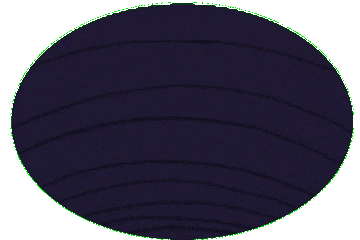Last House on Dead End Street
Last House on Dead End Street, originally released as The Fun House, is a 1977 American exploitation horror film written, produced, and directed by Roger Watkins, under the pseudonym Victor Janos. The plot follows a disgruntled ex-convict (also played by Watkins) who takes revenge on society by kidnapping four acquaintances and filming their murders in an abandoned building. Watkins, a student at the State University of New York at Oneonta, devised the concept for the film after reading the Charles Manson biography The Family (1971) by Ed Sanders. Commissioning a cast from the university's theater department, Watkins shot the film inside an unused building on the university campus in the winter of 1972, on a budget of around $3,000. Watkins's original cut of the film, entitled The Cuckoo Clocks of Hell (now lost), ran approximately three hours in length. A truncated version of the film was released theatrically in 1977 under the title The Fun House. In 1979, Cinematic Releasing Corporation acquired distribution rights to the film and re-released it under the title Last House on Dead End Street, capitalizing on the popularity of Wes Craven's The Last House on the Left. The film was met with a mixed critical reception, with reviewers criticizing its production quality and highlighting its grim tone and atmosphere. In the decades following its release, Last House on Dead End Street was subject to various rumors about who had created and starred in it, as the entire Cast And Crew were credited using pseudonyms. This resulted in speculation that the film might have depicted actual murders. In 2000, Watkins publicly came forward and confirmed himself as the director, writer, and lead actor. Two years later, the film was released for the first time on DVD, through participation from Watkins, and with the actual names of the actors revealed. The film has continued to be a point of discussion among film scholars, largely due to its metafilmic qualities, surrealist imagery, and themes surrounding the aestheticization of violence in cinema.
This article uses material from the Wikipedia article "Last House on Dead End Street", which is released under the Creative Commons Attribution-Share-Alike License 3.0.
Connection Chains
- From Shonen Knife to Last House on Dead End Street in 8 Steps
- From Harry Nilsson to Last House on Dead End Street in 8 Steps
- From The Story Of Rock And Roll to Last House on Dead End Street in 8 Steps
- From There Will Never Be to Last House on Dead End Street in 7 Steps
- From The Bourne Legacy to Last House on Dead End Street in 6 Steps
- From Super Password to Last House on Dead End Street in 5 Steps
- From Donna Murphy to Last House on Dead End Street in 5 Steps
- From The Cheers to Last House on Dead End Street in 5 Steps
- From Win, Lose or Draw to Last House on Dead End Street in 5 Steps
- From Donna Murphy to Last House on Dead End Street in 5 Steps
- From The Dead Pool to Last House on Dead End Street in 5 Steps
- From Tattletales to Last House on Dead End Street in 5 Steps
- From Shawn Elliott to Last House on Dead End Street in 4 Steps
- From Bert Convy to Last House on Dead End Street in 4 Steps
- From Shawn Elliott to Last House on Dead End Street in 4 Steps
- From Bobbi Jo Lathan to Last House on Dead End Street in 4 Steps
- From Zapata to Last House on Dead End Street in 3 Steps
- From September 17 to Last House on Dead End Street in 2 Steps
- From Obits to Last House on Dead End Street in 2 Steps
Connections
- Roger Watkins wrote and directed Last House on Dead End Street






![Last House on Dead End Street [DVD] Last House on Dead End Street [DVD]](https://m.media-amazon.com/images/I/51CGBfYPArL._SL500_.jpg)



![The Last House On Dead End Street [New DVD] NTSC Format The Last House On Dead End Street [New DVD] NTSC Format](https://i.ebayimg.com/images/g/5AcAAeSwrDxpHXQ-/s-l225.jpg)

